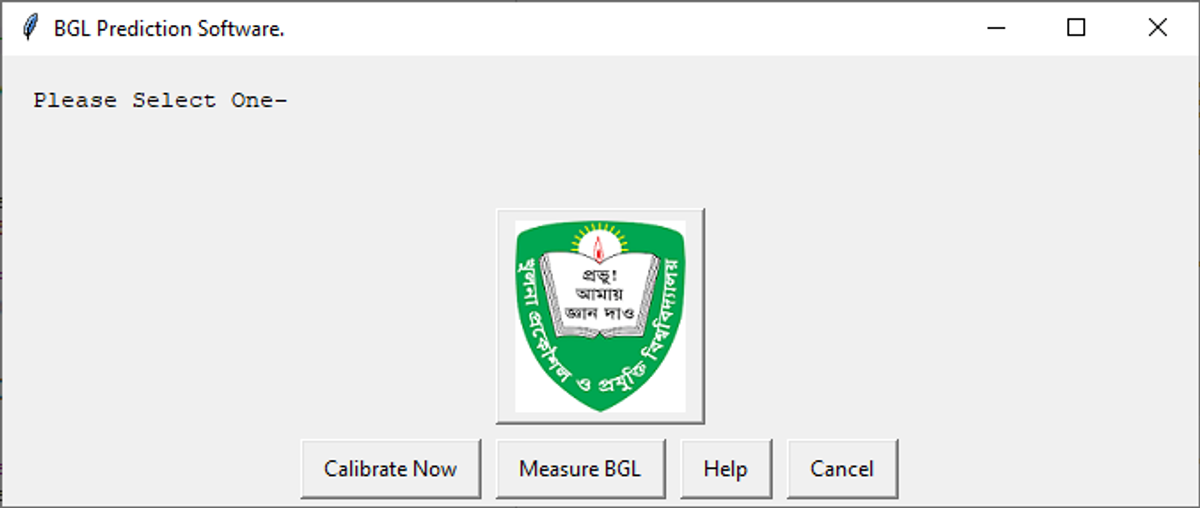
30 October, 2019
Personal Calibration Based Non-invasive Blood Glucose Measurement using NIR (Near Infrared Ray)

Tanvir Ahammed
BGL measurement using non-invasive method is a great challenge. A lot of attempts have been taken to develop portable, reliable, and risk-free device suitable for measuring self BGL non-invasively, but there are no commercial devices in market so far our knowledge. The main objectives of this thesis work is to propose and demonstration of a portable, reliable non-invasive BGL measurement device. The specific objectives of this thesis are delineated
as follows:
• Demonstration and comparison of NIR reflectance-based and smartphone video capturing-based BGL measurement system.
• Development of PPG signal acquisition system for the smartphone and NIR-based systems.
• To validate the BGL result obtained from the proposed systems with corresponding
BGL obtained from standard chemical analysis method.
• To propose a suitable BGL measurement system.
• To develop a portable, reliable, risk-free and cost-effective non-invasive BGL measurement device.
Summary:
Two non-invasive BGL measurement systems based on PPG signal are analyzed first one is general calibration-dependent method and second one is personal calibration-dependent NIR based method. In general calibration-dependent BGL measurement system NIR- and video capturing-based methods are studied. PPG signal acquisition system from fingertip is developed for both NIR- and video capturing-based methods. To develop a general calibration-dependent BGL prediction model, PPG signal from 240 patients along with actual BGL are collected. Different features like peak voltage, valley voltage, peak to valley voltage and entropy of PPG signal are used to develop a general calibration-dependent BGL prediction model using different machine learning algorithms like LR, RFR and SVMR. But the general calibration-dependent model using NIR- and video capturing-based method shows large prediction errors and poor prediction accuracy. None of the discussed machine learning technique gives a perfect model that can be used for BGL prediction noninvasively using general calibration-dependent model.
Due to poor BGL prediction accuracy of general calibration-dependent BGL prediction model, personal calibrated NIR based and video capturing by smart phone based non-invasive BGL measurement methods are studied. PPG signal from 4 different persons are taken using both methods at fasting and non-fasting condition with corresponding BGL. It is found that average peak voltage of PPG signal obtained from NIR-based system shows good correlation with BGL and changes linearly with BGL for a particular person.
Finally, personal calibrated NIR-based method using LR is proposed and a portable device using Arduino and Raspberry-Pi is developed for real-time BGL prediction. The user interface software of the device is developed in Python environment. A 5-inch touch display is connected with the device so that a user can calibrate the device by himself and can measure his BGL. Two known values of BGL (i.e. fasting and non-fasting BGL) are required during calibration. To justify the effectiveness of the developed device 40 BGL readings from 10 different aged persons are collected and compared with glucometer BGL readings. The glucometer is calibrated previously with standard CAM readings.
Comparing BGL data obtained from the developed device and glucometer, it is found that the developed device can effectively measure BGL and shows better prediction accuracy compared to general calibration-dependent BGL prediction model. The developed device takes only 15 seconds to display BGL as well as heart rate information of the user.
Finally the validity of calibrated model also justified by comparing the device and glucometer readings after three months. The device shows consistent results using previously calibrated model after three months also and it is found that the calibration model depend mostly on diabetic patient's current BGLs condition not on duration and a person may require further new calibration if the person's fasting and non-fasting BGLs changes drastically.
As BGL measurement using the developed device is less time consuming, painless, risk free and non-invasive this device could be used as a replacement of glucometer type devices.
Hardware components used:
- Arduino Uno
- Raspberry-pi 3 model B
- SD card 16GB
- 5 inch Raspberry-pi touch screen
- Finger probe (Tx:940nm Rx:1000nm)
- Signal conditioning circuit (Op-Amp:LM358, Active first order low pass filter, fc=2.4Hz, A=101)
- Powerbank (10000mAh)
Software used:
- Python (Library used: scipy, sklearn, easygui, pyserial)
- Arduino
- Raspberry-pi OS
Research Images
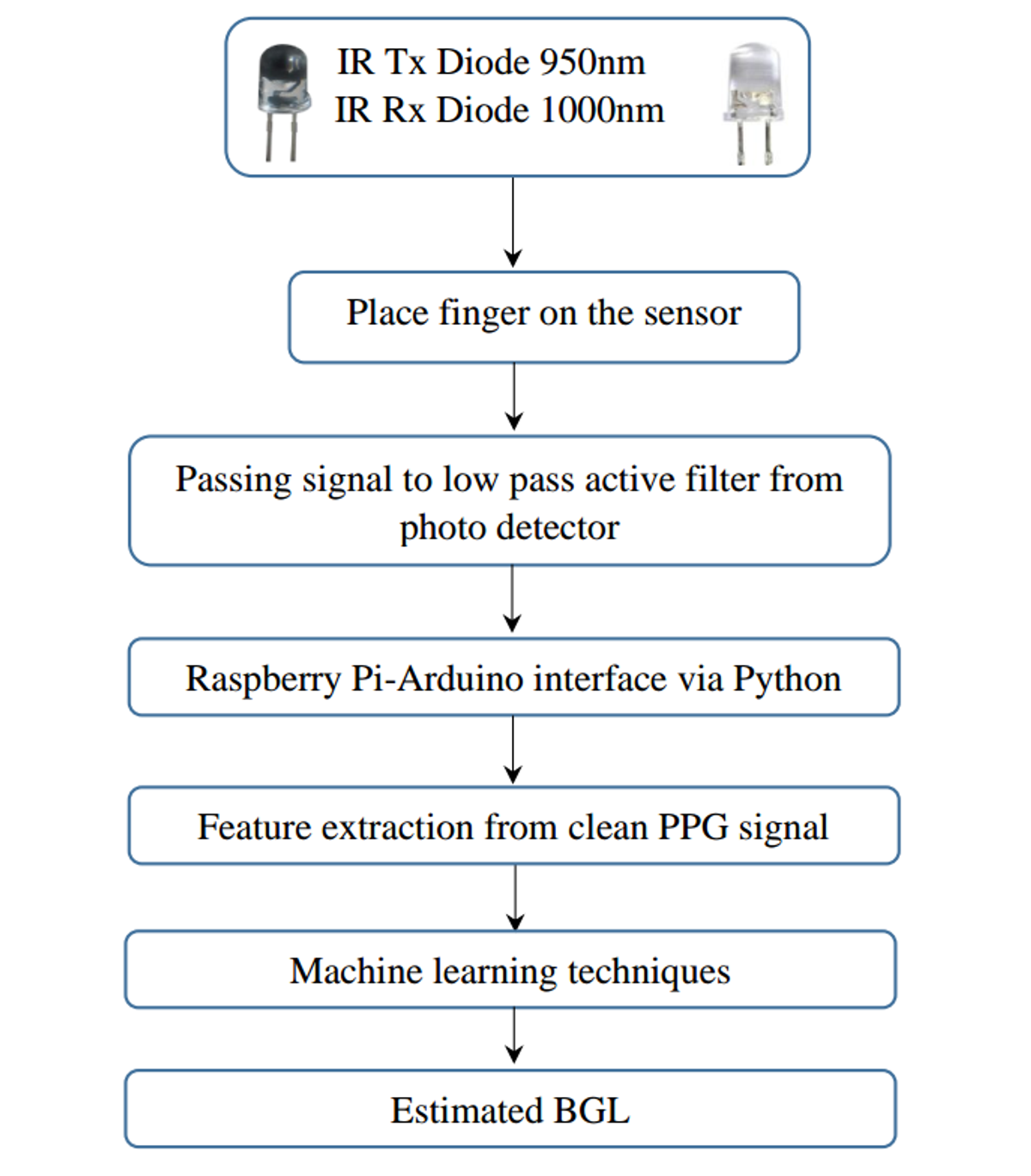
Block diagram
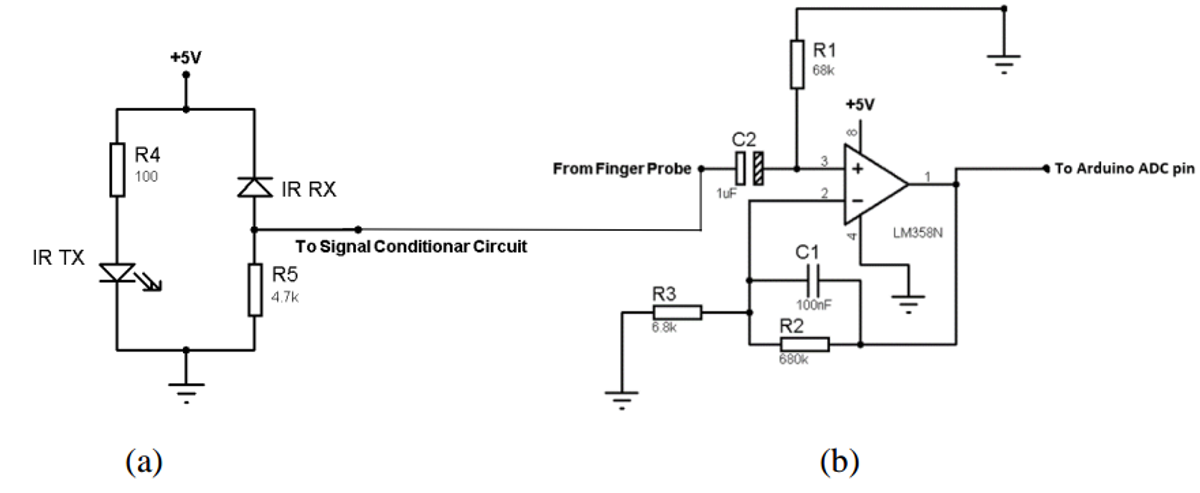
Finger probe and signal conditioning circuit
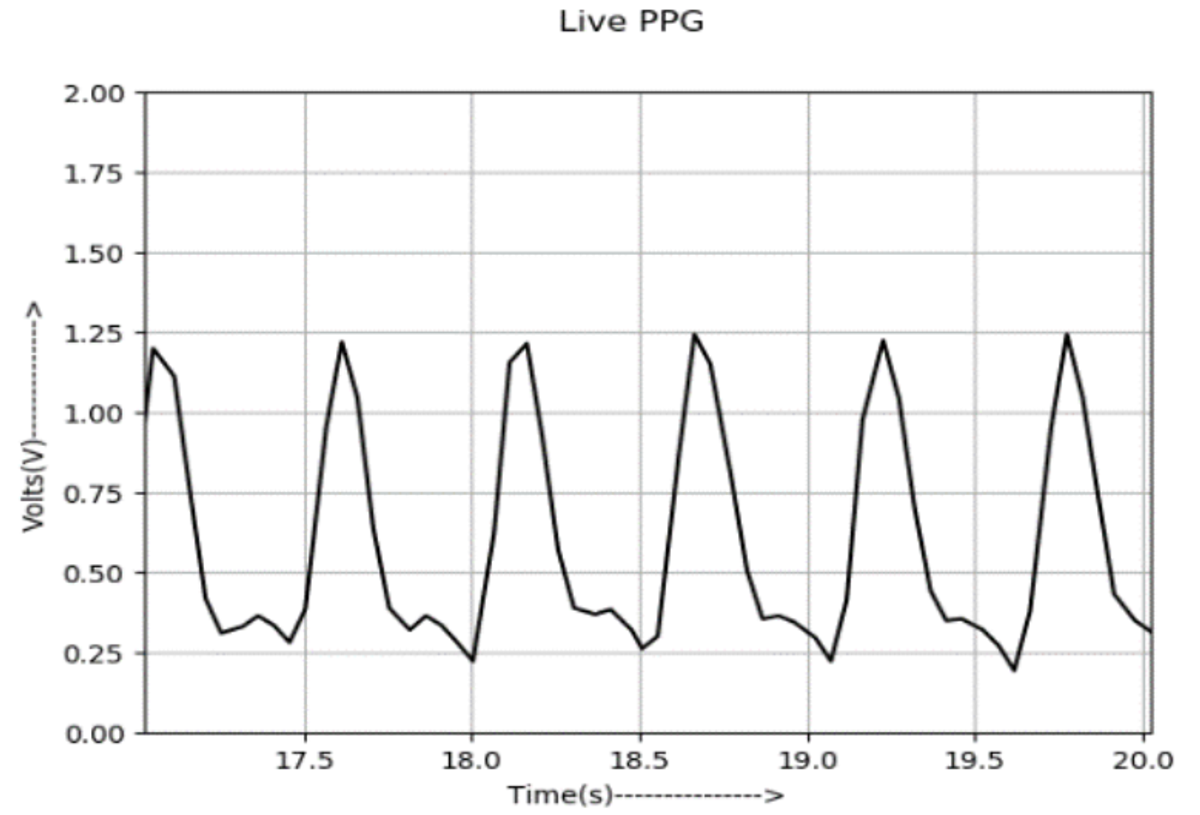
Extracted PPG signal
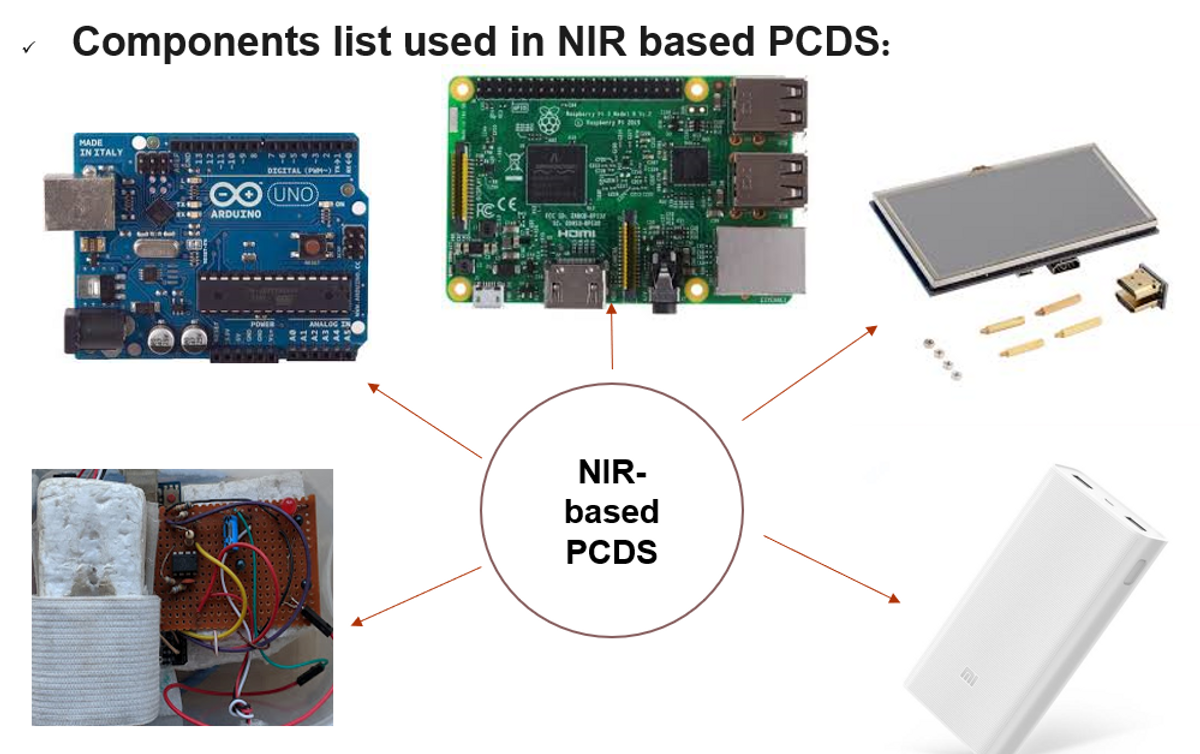
Hardware block diagram
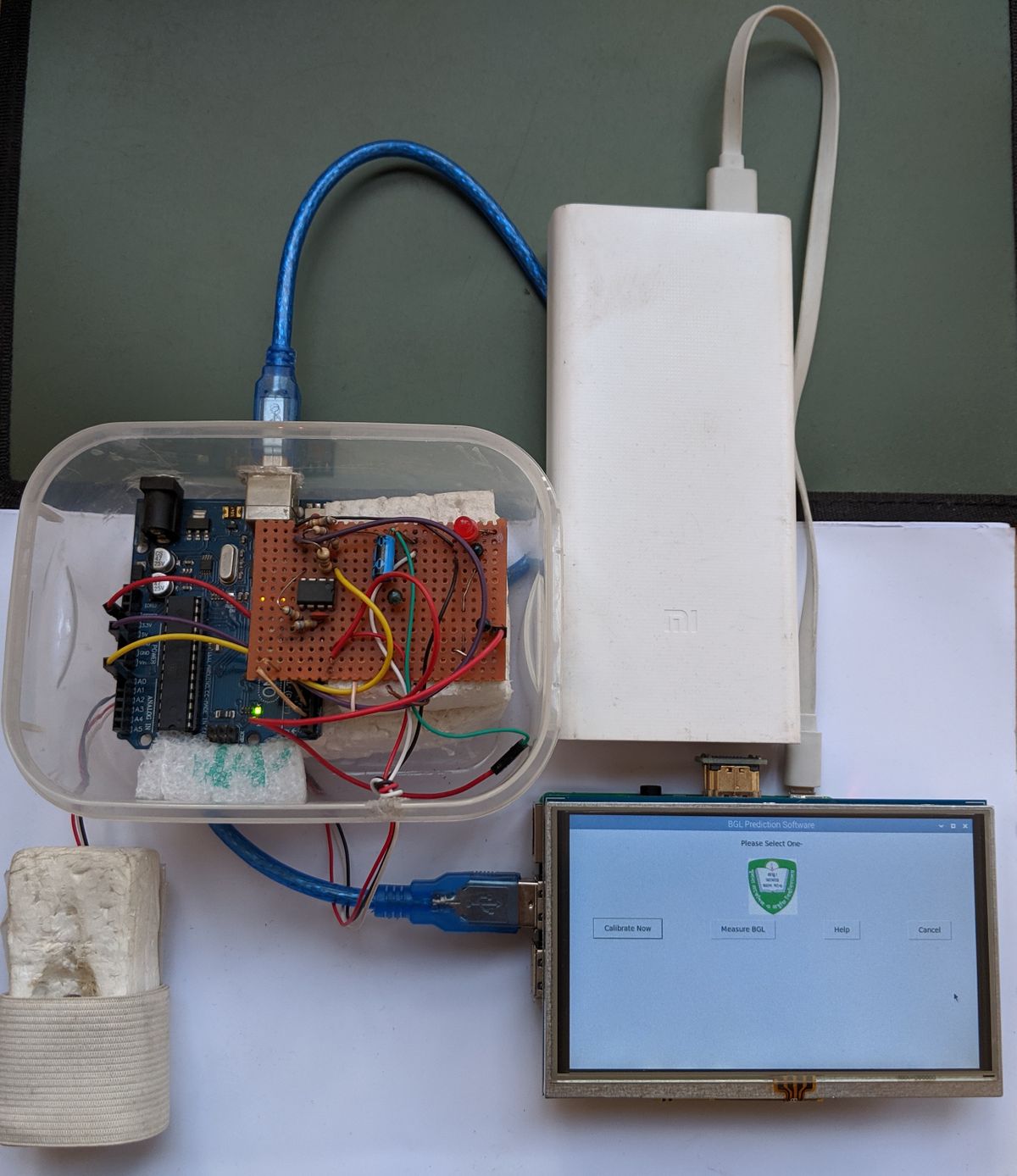
Hardware implementation
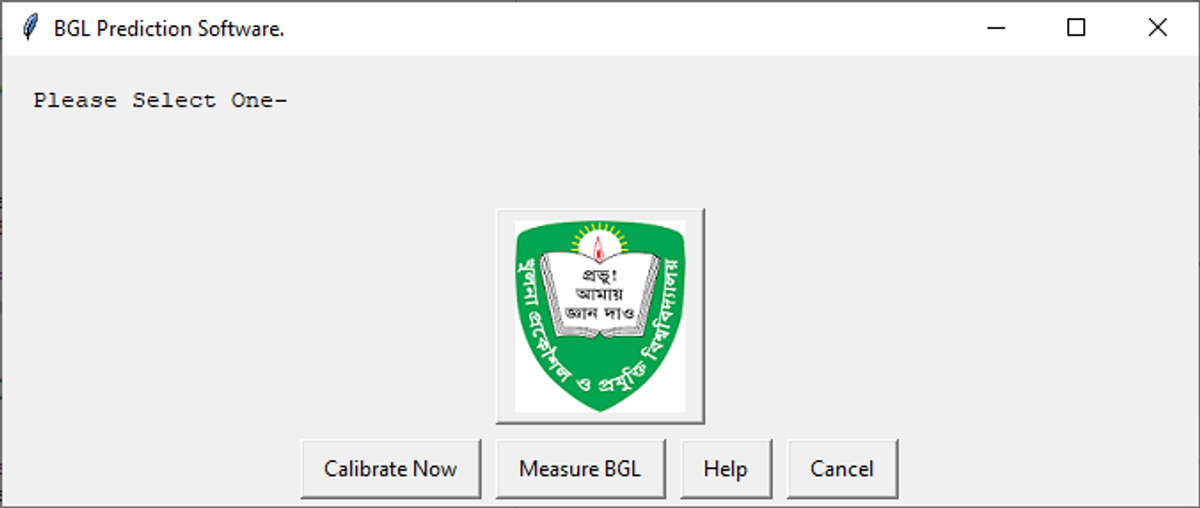
Software interface
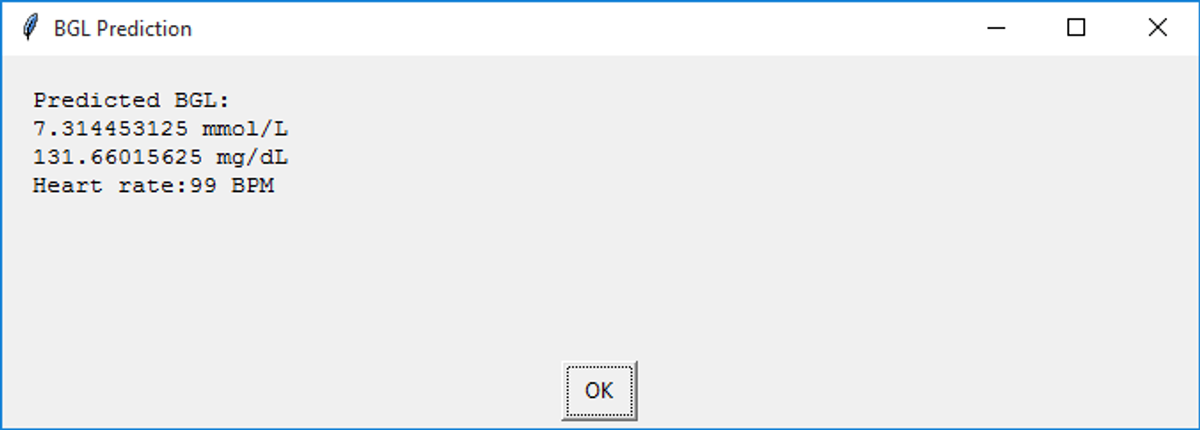
Displayed BGL and HR result
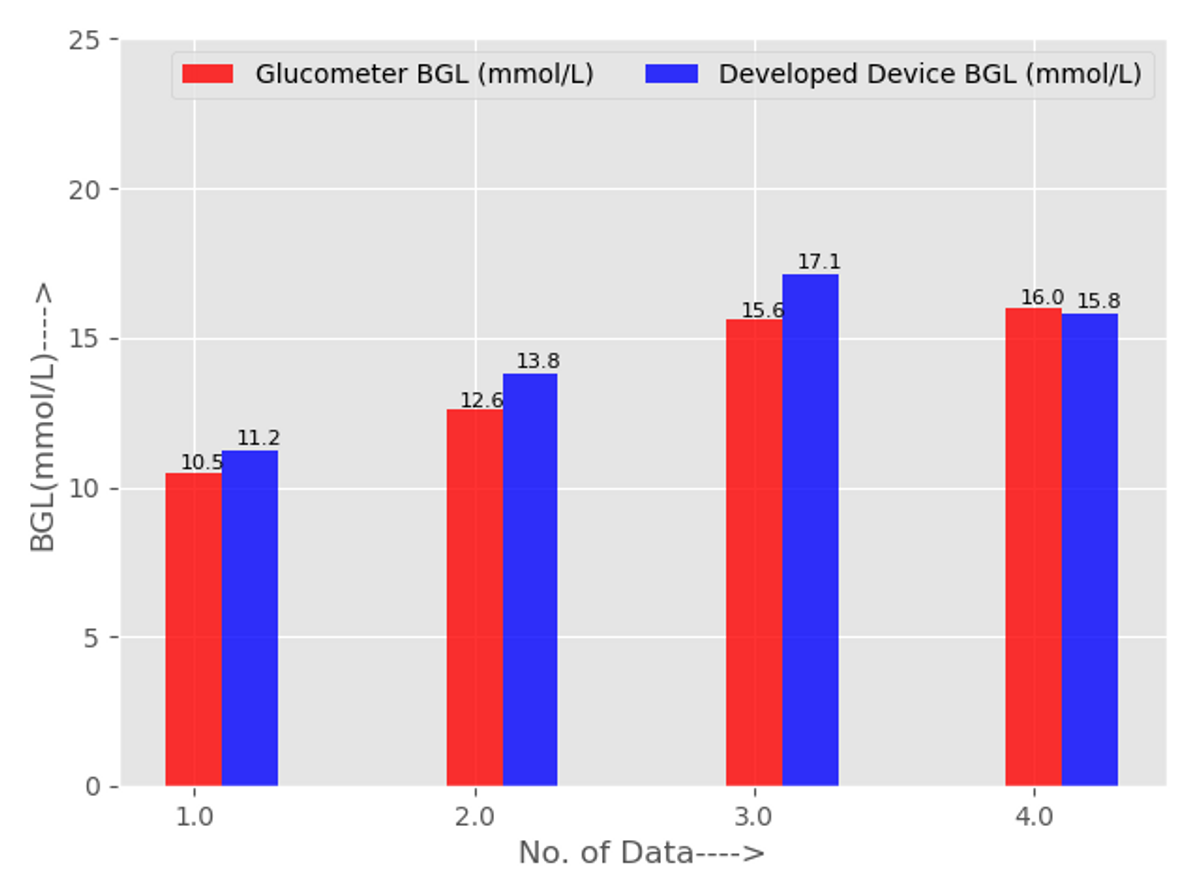
1. Result comparison with Glucometer data for person-1
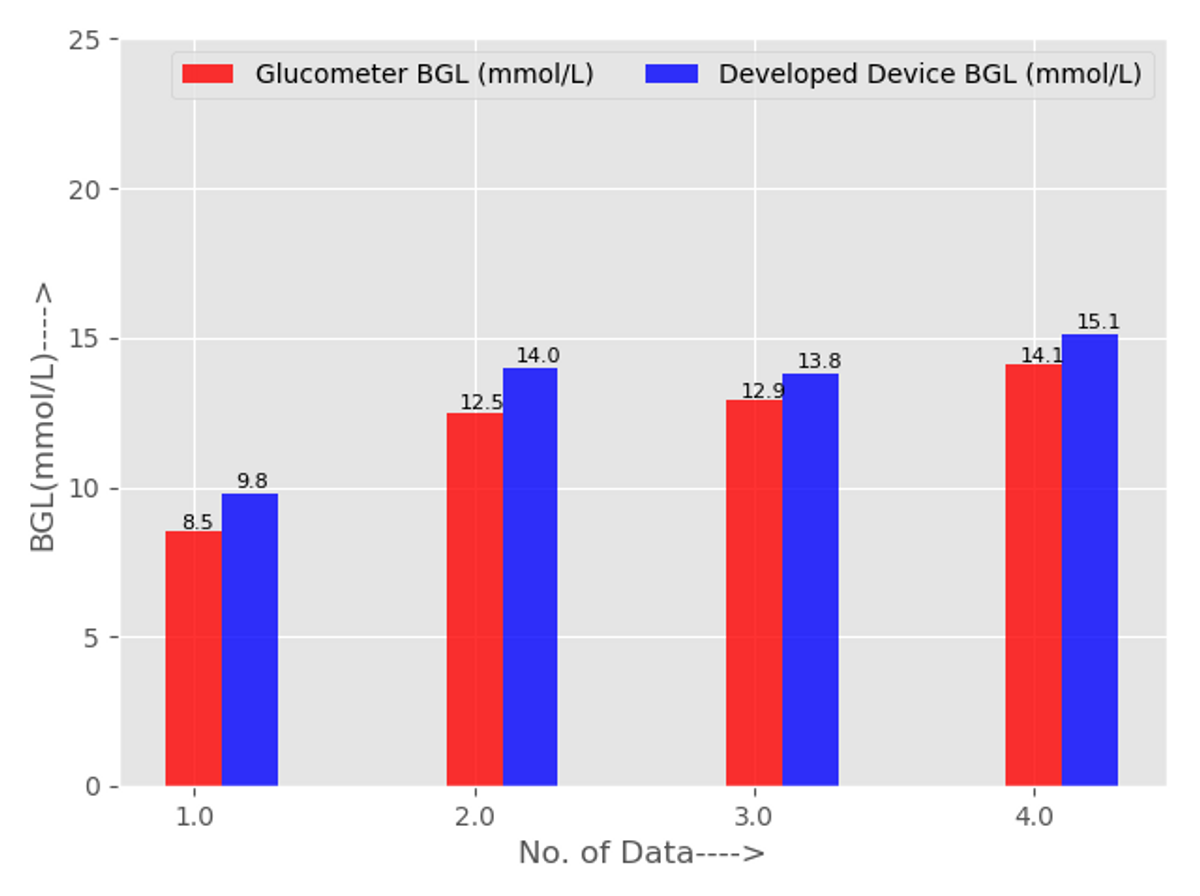
2. Result comparison with Glucometer data for person-2

